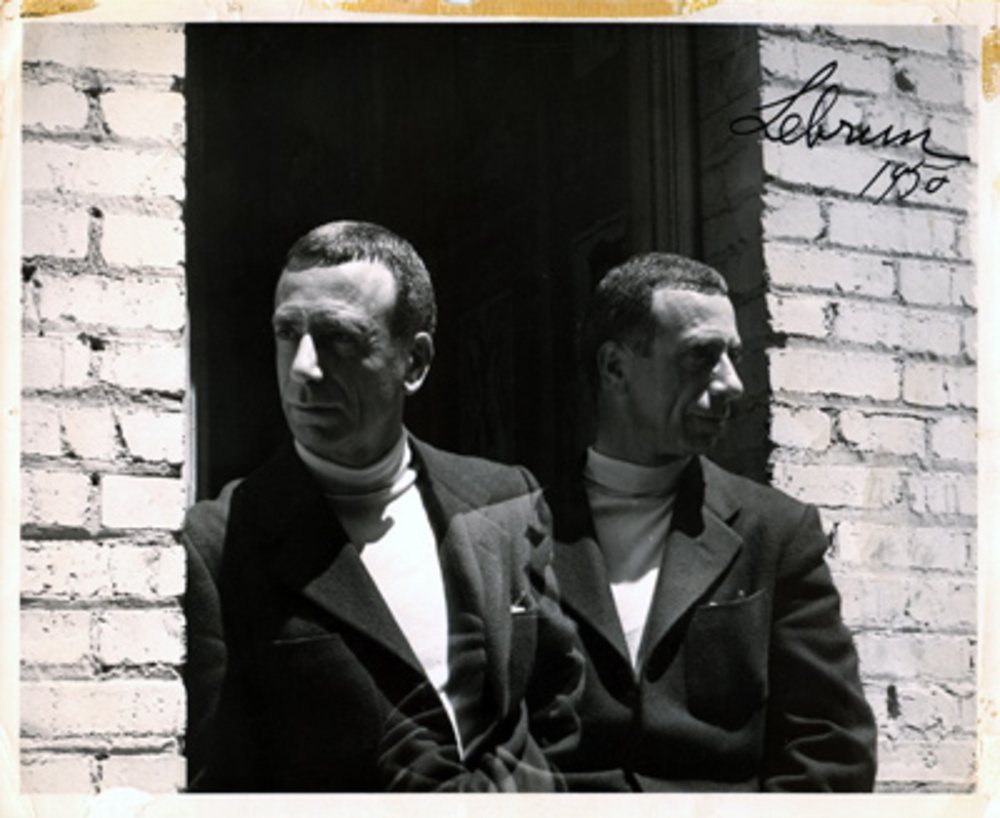Rico Lebrun's Biography
by Eunice Lee
A Quick Background of Rico Lebrun:
by: Eunice Lee
“My aim is a continuous, sustained, uncontrived image, motivated by nothing but passion,”
-Rico Lebrun
Rico Lebrun, an Italian-American artist born in 1900, is renowned for his compelling and often haunting visual explorations that delve into the depths of human existence. His work spans various mediums, including painting, drawing, and sculpture, characterized by its raw emotional intensity and profound psychological depth. Lebrun's artistic journey unfolded against the backdrop of the 20th century, influencing his art deeply, particularly his experiences as a WWII refugee, which infused his creations with a sense of existential angst and the fragility of the human condition.
Lebrun's oeuvre is marked by a striking fusion of classical influences and modern expressionism. His works often depict contorted figures and fragmented forms, imbued with a sense of struggle, torment, and resilience. His mastery of line and form reveals an acute understanding of anatomy, yet he transcends mere representation, delving into the realms of the subconscious and the visceral. Through his art, Lebrun grappled with themes of suffering, mortality, power dynamics, and the complexities of human nature, inviting viewers to confront the darker aspects of the human experience.
------------------------------------------------------------------------------------------------------------------------------------------------------
Rico Lebrun's Early Life
by: Eunice Lee
Rico Lebrun was born in 1900 into a working-class family in Naples, Italy. His first years and adolescence were imbued with cultural richness and personal adversity, all of which profoundly shaped the trajectory of his artistic journey. Lebrun’s passion for art can be traced back to the setting he grew up in; art flourished in Naples as it had an artistic legacy amidst the vibrant Italian Renaissance remnants–like new, emerging forms of art, architecture, and literature–that intertwined throughout the city. Though the artist never explicitly mentioned whether his setting had a crucial influence towards his career, it was evident that Lebrun drew inspirations from well-known Italian artists like Caravaggio and Michelangelo, and their specific forms of art–like visceral expressiveness, or focus on anatomical precision–which he admired with his “budding” artistic vision.
Another factor that shaped Lebrun into the artist he became was the time he was born. One of the most impactful events within his early life was the tumultuous aftermath of WWI, and growing up during this time period indubitably shaped the medians Lebrun incorporated into his artworks, as well as his uniqueness as an artist. The post WWI era in Europe was filled with devastation and societal upheaval, and this inevitably impacted young Lebrun’s psyche, ultimately fostering an acute sensitivity to human suffering and the complexities of the human condition.
Trying to escape this treacherous time was one of the many reasons Lebrun and his family moved to America from Italy in 1906, when he was just six years old. Like many immigrants, his family likely sought better opportunities, such as economic prospects or improved living conditions from the aftermath of the war. This led to the artist spending most of his life there, allowing him to receive his title as an “Italian-American artist”. To further build his artistic persona, Lebrun attended the Chouinard Art Institute in Los Angeles, California. He studied there during the 1930s and received formal training in art, which significantly contributed to shaping his artistic style and skills. Lebrun's time at Chouinard allowed him to develop his unique approach to figurative art and laid the foundation for his later artistic endeavors.
With this artistic education mixed with his personal life, Lebrun is able to create his own unique style as an artist. For example, from an audience perspective, we are able to see that this theme of “struggling” and “suffering” permeates his artistic oeuvre. One of his paintings that students studied in AMCULT 244, is called “Terrified Woman with Child” (1947), a painting characterized by a singular color and harsh, messy brush strokes (can be seen in the second slide of the slideshow). The subject of the painting is seen with a child on her back, inferred to be straining and struggling, even though her expressions aren’t shown. The way she is drawn–the brush strokes and the materials used to create the painting– is what personalizes her struggle, and is a distinctive aspect that can be seen in some of Lebrun’s work. This idea can be further explained in the section, “Artist Authenticity”.
The exposure of classical artistry, focused education, and encounters with post-war Europe were the main aspects that made Lebrun into the extraordinary artist that he is. He had a desire to capture the “rawness” of his muses, which propelled him towards a career marked by profound introspection, social commentary, and a relentless pursuit of “truth” through his art.
Created For
K-12 EducatorK-12 Student
Museum Visitor
UMMA Docent
UMMA Staff
University Faculty
University Student
Rate this Resource
AVG: 0 | Ratings: 0
& Author Notes
All Rights ReservedLast Updated
December 2, 2023 8:54 p.m.Report
Reporting Policy


